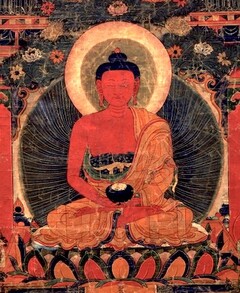Amitābha Series
English (27) | Deutsch (4) | Español (10) | Français (10) | Português (11) | Italiano (2) | Nederlands (1) | 中文 (2) | བོད་ཡིག (27)
Texts related to Buddha Amitābha ('od dpag med), ‘Boundless Light’:
Aspiration Prayers
by
Jigme Lingpa
